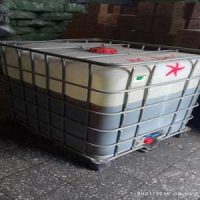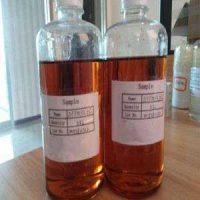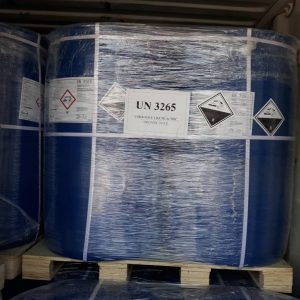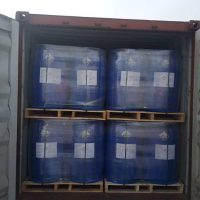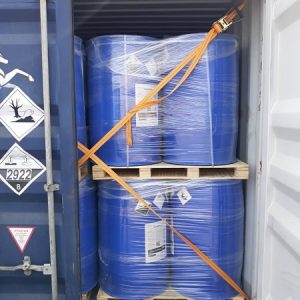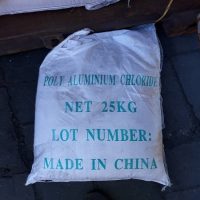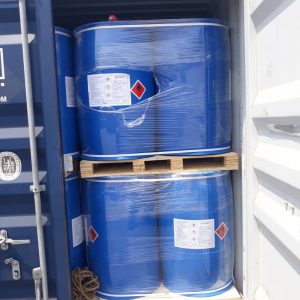Etidronic acid (HEDP)
- Description
- analysis of HEDP 98%
- analysis of HEDP 60%
- shipping & delivery
Description
Etidronic acid 1-bis (phosphonic acid) that is (ethane-1,1-diyl) bis (phosphonic acid) also known as 1-hydroxyethylidenediphosphonic acid (HEDP) is a first-generation bisphosphonate. it’s used in various industries such as medication, detergent, water treatment, and cosmetics. This product was approved for medical use in 1977.
Properties
| Chemical formula | C2H8O7P2 |
| Molecular Weight | 206.03 g/mol |
| Appearance | liquid |
| Melting point | 198-199 |
| Boiling point | 578.8 |
| solubility | 3.35 |
| Chemical structure |  |
Production
HEDP can be prepared by reaction of Phosphorus trichloride with acetic acid in a tertiary amine.
The second method for producing this substance is the reaction of a mixture of acetic acid / acetic anhydride with phosphoric acid.
Applications of Etidronic acid
This substance has various applications in various industries such as medicine and pharmacy, chemicals, antioxidants, and chelating agents, etc.
Medical
It is a bisphosphonate that has many uses in the treatment of osteoporosis and to strengthen bones
Bisphosphonates reduce osteoporosis and prevent bone resorption. Therefore, the balance of bone resorption/formation is shifted towards bone formation and strengthening, and in the long run, it strengthens and strengthens the bone.
In addition, unlike other bisphosphonates, this compound also prevents bone calcification. For this reason, it is preferred to substances with similar properties in the treatment of osteoporosis.
HEDP as one of the bisphosphonate drugs differs from endogenous pyrophosphate in terms of resistance to enzymatic hydrolysis. By binding to hydroxyapatite cells, this factor reduces the number of osteoclasts, thus preventing abnormal bone resorption.

Industrial
This material also has various applications in the industry. One of the main applications of this material is as an anti-fouling and corrosion agent in circulating cold water systems. It is also used in concrete production as a concrete inhibitor. In addition, HEDP has many applications in the chemical and metallurgical industries of fertilizer production, metal detergent production, color stabilization, textile, and dyeing.
Etidronic acid, as a chelating agent, may be added to bind or partially counteract the effects of calcium ions, iron, or other metals present in wastewater to prevent contamination of groundwater. As a phosphonate, it has corrosion inhibiting properties on non-alloy steel.
HEDP also can be used to combat severe B. This substance and its salts are added to detergents and other detergents as a chelating agent. In addition, it is used in peroxide bleaching to prevent the destruction of peroxides by transition metals.
Cosmetic
This substance is mentioned as a raw material in some cosmetic formulations. The role of HEDP in the production of cosmetics to suppress the formation of free radicals, emulsion stabilization and viscosity control. While Etidronic acid is licensed for use in cosmetics, it is recommended that, like most cosmetics (especially soaps), it be thoroughly washed off the skin after use.
What is HEDP in soap?
(Chelating) Substances that are added to cosmetics to react and form complexes with metal ions can affect the stability and/or appearance of cosmetics.

Safety
Patients who overdose may experience hypocalcemia, vomiting, paralysis, and diarrhea. Overdose of this substance can be treated and includes the management of electrolyte imbalance and intravenous calcium gluconate.
Benefits of Etidronic acid
Since Etidronic acid has a good chelating ability by forming complexes with heavy metal ions in cosmetics, the receptors stabilize the cosmetics by stabilizing the oxidation compounds.
analysis of HEDP 98%

analysis of HEDP 60%



